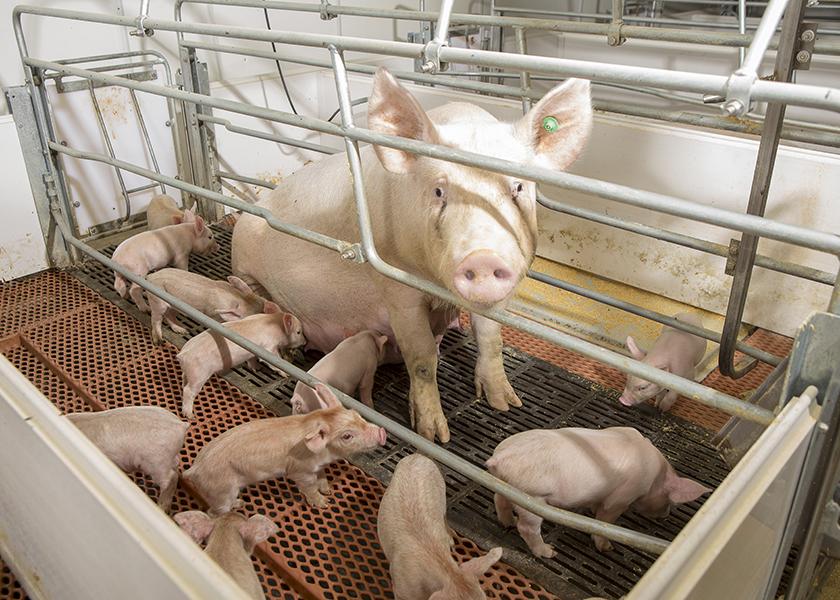Consider Heat Increment of Digestion When Formulating Sow Diets

As a nutritionist, Jeff Knott, owner of IDEAL Animal Nutrition, admits it can be hard at times to know how to best formulate lactation diets in sows. Lactation feeds are really “uncoupled,” he said, meaning nutritionists often focus on grams of digestible lysine per day.
“Then, we are takers of whatever calories we get from the feed,” Knott said during the Gestal Swine Summit. “I don’t know if this is the right approach.”
Body condition loss is a major concern during lactation and net energy balance is a big driver of what that body condition can be, he noted.
Overfeeding amino acids can be negative towards energy balance and lactation feed intake. This higher heat increment of digestion exists from excess soybean meal, he pointed out, because it takes more energy to break down and excrete excess crude protein and amino acids.
Why Does Heat Increment of Digestion Matter?
Heat increment of digestion expresses the amount of heat that's given off when a certain ingredient is digested.
In other words, Knott said, “We start out with gross energy, which represents 100% of the energy that's available to the pig. As we go through digestible energy and metabolizable energy, we excrete some of that energy through fecal energy and urinary energy loss. The difference between metabolizable and net energy is what's called heat increment of digestion.”
Ingredients that have high fiber and high crude protein typically have higher heat increment than cereal grains like corn, wheat or barley, he said.
“Any time there's heat loss in a system, that's energy being wasted,” Knott said. “The more heat that's given off, the less net energy that will reach productive properties like milk production in this case.”
Because pigs are homeotherms, like humans, they will keep their body temperature higher than what the environmental temperature is in most cases. They balance heat production by feed intake.
“If we're already outside our thermoneutral zone, and suffering from some heat stress, the first thing we're going to do is drink more water. But the next thing is we will reduce our feed intake to reduce the internal heat of combustion, of digesting that feed, in order to balance with our environmental temperature,” Knott explained.
How Does This Impact Lactation?
During lactation, the sow is already outside of her thermoneutral zone. Diets high in soybean meal result in more heat. If diets are formulated with too much digestible lysine or excess soybean meal, this can have an overall negative effect on her overall heat balance. This will result in reduced feed intake, which has trickle-down effects in terms of intake of certain nutrients, energy, amino acids, calcium, phosphorus, etc.
Overfeeding digestible lysine and crude protein amino acids could hurt the sow’s overall body condition or weight loss as she's coming out of lactation, he added.
“Don't overfeed amino acids and underfeed energy during lactation. This results in excess nitrogen excretion, higher heat production through heat increment of digestion and potential for poorer subsequent feed intake,” Knott warned. “If we lose too much body condition coming out of lactation, there could be implications also on subsequent reproduction and subsequent parities down the road.”
Watch the webinar here. Learn more about the Summit.
More from Farm Journal's PORK:







